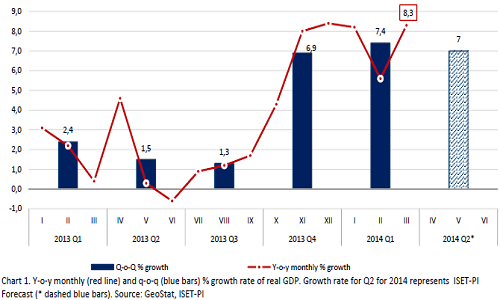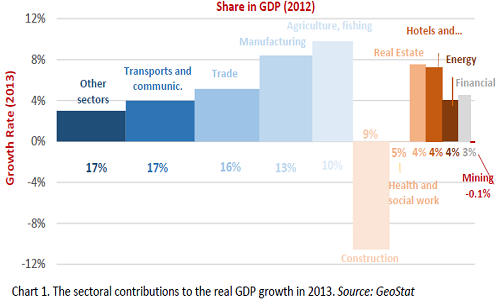- Details
The frenzied seasonal agricultural activities – purchases of plants, seeds, fertilizers, investment in food processing, as well as the upcoming elections, invigorated real economic activity in March 2014. According to the GeoStat primary estimates, in this month the y-o-y real economic growth reached 8.3%. As a result, primary growth rate for the first quarter of 2014 increased to 7.4 %.
As encouraging as the figures look, the important question is whether growth is driven by the increased business activity or an increase in private household consumption? Unfortunately, at this point there is no solid evidence on which one could base an answer to this question. The data on the breakdown of GDP by categories on a monthly basis is simply not available. We have reasons to believe, however, that March growth is driven at least in part by higher consumer spending, and in that sense may be short-lived. The business activity has picked up as well, but the relative importance of these two growth components in GDP is yet to be ascertained. Download the full report
- Details
In recent months, ISET‐PI has devoted considerable time to exploring the reasons behind the sharp decline in annual real GDP growth in 2013 (from 6.2% in 2012 to 3.3%). With official data for the whole of 2013 finally becoming available, we are taking this opportunity to revisit our previous conclusions and offer new insights.
The figure below provides a visual representation of the sectoral contributions to the real GDP growth in 2013. The horizontal axis represents the share of each sector in total GDP in 2012, whereas the vertical axis represents growth rates of each sector in 2013. Thus, the area of each rectangular block represents the overall contribution of each sector to real economic growth in 2013 (Under other sectors we included Education; R&D; other community, social and personal service activities) Download the full report












